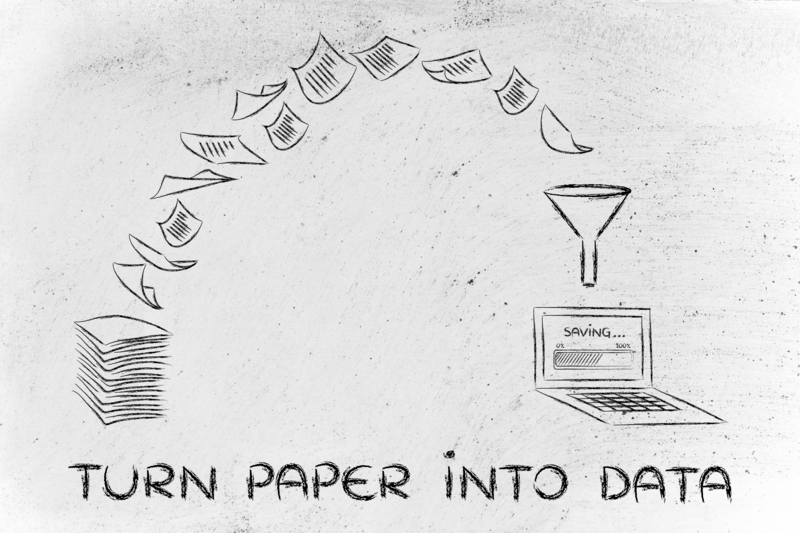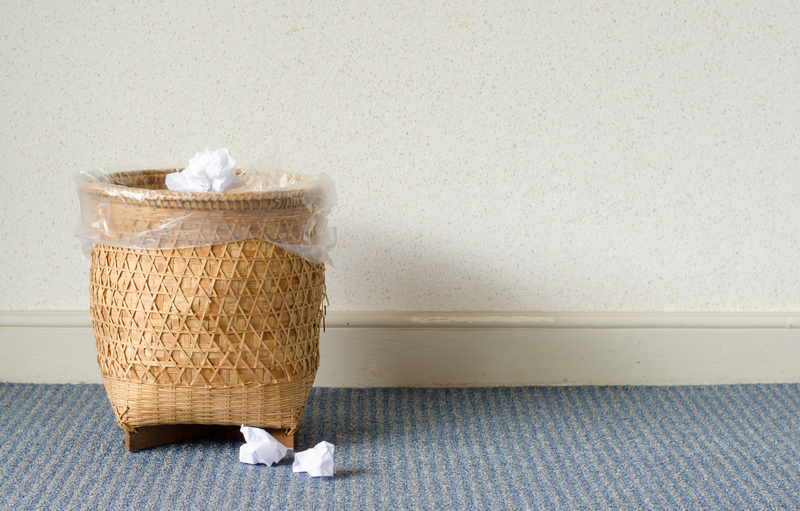How to Properly Recycle Old Pots and Pans: A Comprehensive Guide
Do you have a stack of old, worn-out cookware gathering dust in your kitchen? Perhaps you're wondering what you can do with those outdated pots and pans rather than just adding them to the landfill. Recycling kitchenware might seem tricky, but it's not only possible--it's environmentally responsible and sometimes even rewarding. In this in-depth article, we'll explore how to properly recycle old pots and pans, introducing you to tips, methods, and creative solutions that make the process easy and eco-friendly.
Why Should You Recycle Old Pots and Pans?
Recycling old cookware is a significant step toward sustainable living. Most pots and pans are made of materials like stainless steel, cast iron, aluminum, or copper, all of which are valuable and recyclable. By avoiding the landfill, you help conserve natural resources, reduce pollution, and support the circular economy.
- Reduces landfill waste: Metals and non-stick coatings can take centuries to decompose.
- Conserves natural resources: Recycling metals saves energy and limits the need for new mining.
- Mitigates environmental pollution: Cookware left in landfills can leach chemicals and heavy metals into soil and water.
If you are committed to a greener kitchen, learning the best way to recycle old pans is essential.

Understanding the Materials: What Are Pots and Pans Made Of?
Before deciding how to recycle your old pots, it's crucial to identify their materials, as different recycling processes apply depending on whether they're made from:
- Stainless Steel - Highly recyclable and valuable.
- Aluminum - Lightweight and easily processed.
- Copper - Rare and often recycled for value.
- Cast Iron - Durable and excellent for upcycling or scrap metal recycling.
- Non-Stick (Teflon) Coatings - Trickier to recycle due to chemical coatings.
- Ceramic or Enamel-Coated - May pose challenges but some options exist.
Tip: Look for any recycling symbols or manufacturer recycling advice on the pot or pan.
How to Recycle Old Pots and Pans: Step-by-Step Guide
1. Assess the Condition
Before recycling, evaluate if your cookware has any life left. If your pans can still be used, consider:
- Donating to shelters or nonprofits
- Passing them to friends/students setting up new homes
- Participating in local freecycling or swap events
Items with warped surfaces, missing handles, or damaged coatings cannot be used safely but can usually still be recycled or upcycled.
2. Check Local Recycling Programs
Not all curbside recycling services accept cookware. Research your city's or county's recycling guidelines. Some programs accept scrap metal, which includes many pots and pans, but they may require drop-off at a dedicated facility.
- Contact Your Local Recycling Center: Phone or check the website for rules on items like non-stick pans or certain metals.
- Look for "Bulk Metal Pickup" Events: Municipalities sometimes schedule special days for collecting metal household items.
- Ask About Preparation Steps: You may need to remove plastic handles or glass lids before recycling.
3. Find a Scrap Metal Dealer
Many scrap metal recycling facilities accept all-metal cookware regardless of overall condition. This is often the fastest and most reliable way to recycle old pots and pans.
- Identify the Metal Type: Dealers will pay based on material--aluminum, stainless steel, and copper are in high demand.
- Remove Non-Metal Parts: Take off handles, lids with glass lids, and any plastic components.
- Call ahead to confirm which items are accepted and the current metal prices (if selling).
4. Specialty Programs and Mail-Back Initiatives
Some cookware manufacturers and brands offer take-back programs for old pots and pans, especially for non-stick or ceramic-coated products. Check company websites for details and mail-back procedures.
- Brands like Calphalon and GreenPan occasionally offer recycling incentives or replacement discounts.
- Mail-in scrap dealers often accept small loads for a modest postage fee.
Special Considerations: How to Recycle Non-Stick Pans
Non-stick coatings, such as Teflon, present recycling challenges due to the chemical properties and health concerns associated with PFAS (forever chemicals). Many municipal programs and scrap dealers cannot process non-stick pans without first stripping the coating.
- If possible, remove the non-stick surface (seek professional advice; do not burn off the coating at home).
- Look for manufacturer take-back programs, especially for non-stick products.
- As a last resort, dispose of in regular trash if no recycling options exist--but this should be your final option.
How to Prepare Old Cookware for Recycling
Preparation increases the chances that your old pans will actually be recycled rather than rejected or landfilled.
- Clean Thoroughly: Remove food residues, oils, and stickers.
- Detach Non-Metal Parts: Unscrew or pry off any plastic handles, knobs, or lids.
- Sort by Metal Type: If you have several pans, sorting by material improves ease of recycling.
Is It Safe to Put Pots and Pans in Regular Curbside Recycling Bins?
No. Most household recycling bins do not accept large metal items. Placing cookware here can damage recycling equipment and delay sorting lines. Always check and use approved recycling drop-off points.
Alternative Solutions: Upcycling and Repurposing Old Pots and Pans
Recycling isn't your only option when it comes to disposing of old kitchen cookware. Get creative! Upcycling offers a way to give beloved pans new life and possibly add unique, personal flair to your living space.
Fun Upcycling Ideas for Old Cookware
- Planters: Drill a few holes in the bottom and use old pots as quirky garden planters or herb containers.
- Kitchen Decor: Hang pans on the wall for a vintage, rustic kitchen vibe.
- Bird Feeders or Bird Baths: Turn large skillet into a backyard bird feeding station.
- Art Projects: Use paint or mosaic tiles to transform pans into art pieces for your home.
- Lid Clocks: Attach clock mechanisms to old pan lids for unique wall clocks.
Upcycling not only diverts items from landfills but adds charm and avoids the resources needed for recycling processes.
Where Else Can You Donate or Drop Off Used Pots and Pans?
If your pans are still functional, or if you want to avoid throwing them away, try one of these donation channels:
- Goodwill, Salvation Army, or Local Thrift Stores - Most accept reusable cookware in decent shape.
- Homeless or Women's Shelters - Many shelters welcome kitchenware donations for families in need.
- Community Kitchens or Soup Kitchens - Organizations that feed the hungry or teach cooking classes often need extra pans.
- Online Marketplaces (e.g., Freecycle, Craigslist, Facebook Marketplace) - Offer unwanted but usable kitchenware for free pickup.
Frequently Asked Questions (FAQ) About Recycling Old Pots and Pans
Can I Recycle Enamel-Coated or Ceramic Cookware?
Typically, enamel-coated pans are more challenging to recycle because of their mixed materials. Some scrap facilities accept them if the bulk is metal, but confirm with local centers first.
Is It Worth Selling Old Copper or Cast Iron Pans to Scrap Dealers?
Yes! Copper, in particular, fetches a high price due to its value in industrial use. Cast iron is sought after for recycling or upcycling--old skillets can sometimes even be restored and resold to collectors.
How Should I Dispose of Broken Glass Lids?
Broken tempered glass lids rarely go in standard glass recycling due to differences in melting points. Wrap broken glass safely in newspaper or a box and place it in the trash, unless your city offers a specialized program.

Tips for Extending the Life of Your Pots and Pans
Reducing recycling demand begins with making your cookware last as long as possible. Here are a few essential tips:
- Use wooden or silicone utensils to prevent scratching non-stick surfaces.
- Hand wash instead of using dishwashers on delicate pans.
- Avoid extreme temperature changes to prevent warping.
- Season cast iron regularly to preserve the surface.
Final Thoughts: Set the Standard for Kitchen Sustainability
Learning how to properly recycle old pots and pans is easy once you understand your options--and the impact can be significant. With millions of cookware pieces discarded each year, your efforts can inspire friends, family, and neighbors to adopt greener practices. Whether you choose recycling centers, scrap metal dealers, manufacturer programs, donation, or creative repurposing, you're helping protect our planet from unnecessary waste.
Remember: Your old kitchen pans are not trash--they're a resource waiting for a new life. Take a few extra minutes to dispose of your old cookware responsibly, and your eco-friendly kitchen will be better for it!